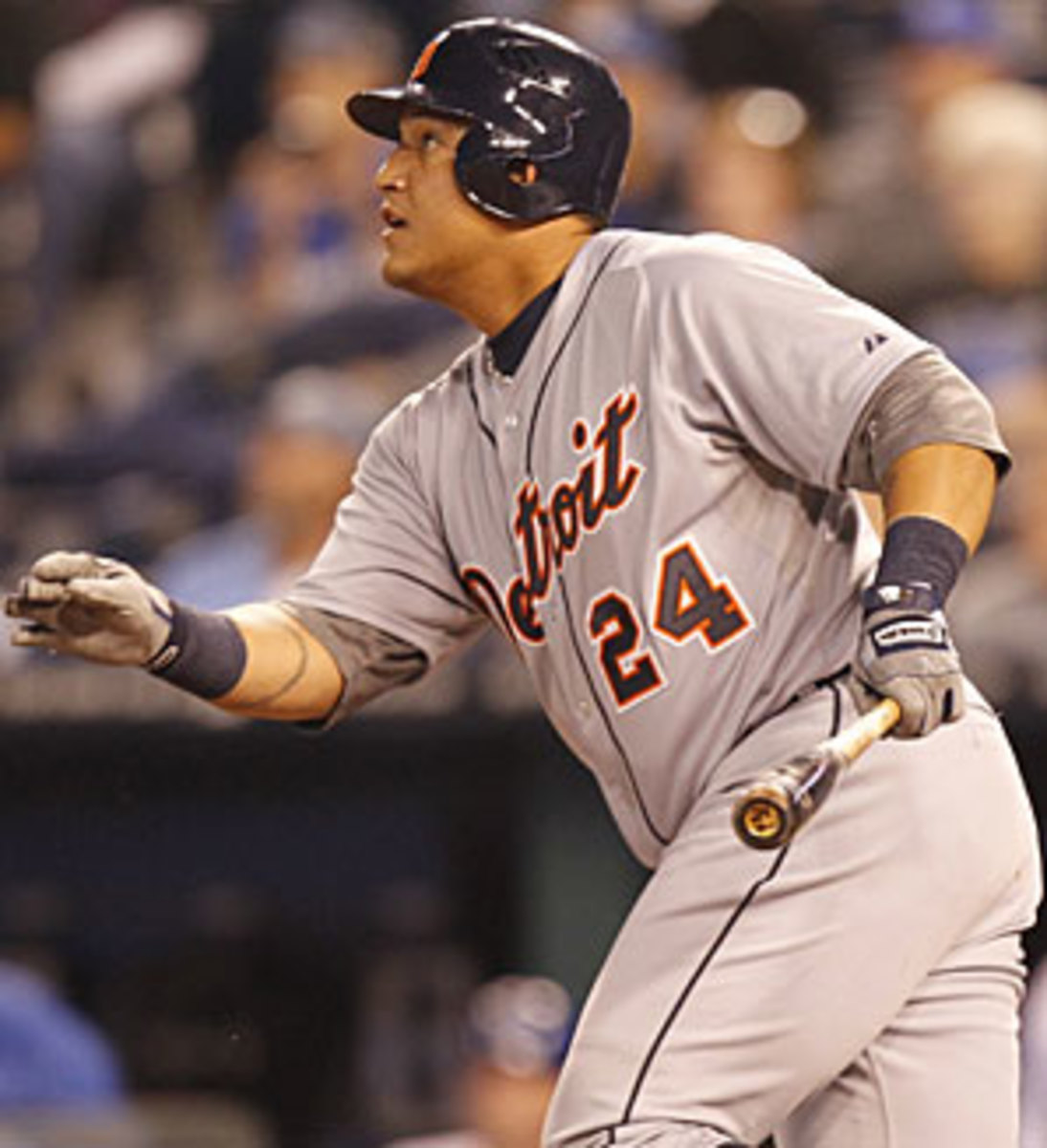Where Miguel Cabrera's season ranks among past Triple Crowns


Now that Miguel Cabrera has won the Triple Crown, finishing the season with a .330 batting average, 44 home runs, and 139 RBIs to become the first player to lead his league in all three categories since Carl Yastrzemski in 1967, it's time to assess his place in history.
To be sure, what Cabrera did is a tremendous accomplishment, something that 45-year gap between Crowns attests to, as well as the fact that all 11 of the men to have accomplished the feat in the Modern Era prior to Cabrera are in the Hall of Fame. However, trying to determine where Cabrera's Triple Crown season ranks among the now 14 won since 1901, it becomes clear that it ranks dead last by two different measures.
The first is Baseball-Reference's Wins Above Replacement (bWAR), which evaluates a player's contributions in all facets of the game relative to that of a replacement-level player, someone freely available via waivers or a minor league call-up, at the same position. That statistic is adjusted for ballpark and league scoring levels, so it's particularly useful for comparing players in wildly different contexts, such as, say, third baseman Miguel Cabrera in Comerica Park in 2012 and second baseman Nap Lajoie in Columbia Park in 1901. Here, then, are the 14 Triple Crown seasons since 1901 as ranked by bWAR:
Yastrzemski's 1967 season is actually the fourth-greatest season of all time according to bWAR, ranking behind only Babe Ruth's three best seasons. That's one product of adjusting for context, as Yaz put up those numbers when run scoring was close to its lowest level in the liveball era. Chuck Klein ranks toward the bottom of this list for the same reason; the combination of league-wide run-scoring levels and his home ball park, the Baker Bowl, put Klein in one of the most hitting-friendly contexts in major league history.
It's also worth remembering that defense is included in bWAR. Yastrzemski added 1.7 wins to his value in the field per Baseball-Reference's numbers, but Frank Robinson, who put up similar Triple Crown numbers in a similar context the year before, cost his team two wins defensively, dropping him all the way down to 12th on this list. Cabrera benefitted from being compared to a replacement-level third baseman rather than a replacement-level first baseman this year, but his play in the field had no real impact on his overall value as he came in at -0.2 wins, effectively neutral.
The second method I chose for evaluating Cabrera's Triple Crown season sheds some light on why he failed to measure up to his predecessors in the first. It's far less scientific, but I wanted to see who won the Triple Crown by the largest margin, something of the reverse of this list that I assembled two years ago of the players who missed the Triple Crown by the smallest margin in the first 42 years after Yastrzemski last accomplished the feat.
To determine who won the Crown by the largest margin, I simply added the total points of batting average, home runs and RBIs by which each player led the league. For example, Cabrera wound up leading Mike Trout by four points of batting average, Josh Hamilton and Curtis Granderson by one home run, and Hamilton by 11 RBIs. Here, then, are those 14 seasons again, this time ranked by largest cumulative lead in the Triple Crown categories:
A couple of things to note here: Yastrzemski and Ducky Medwick both finished tied for most home runs in their leagues (with fellow Hall of Famers Harmon Killebrew and Mel Ott, respectively), so Cabrera's lone-homer lead wasn't the smallest in that category, though only Klein, Yaz and Medwick had a lead as small or smaller. Four players had an RBI lead as small or smaller. Mantle had the smallest margin there with two, followed by Yaz (8), Ty Cobb (10) and Lajoie, who matched Cabrera at 11. No Triple Crown winner, however, had as small a lead in batting average as Cabrera did this year.
That's not surprising. The batting title has been the elusive part of the Crown over the last 45 seasons. Since 1967, a player has led his league in home runs and RBIs 43 times, but Cabrera, the 43rd, was the first of that lot to add the batting title and thus claim the Triple Crown. To that end, one could argue that all of the reasons that many believe no batter will hit .400 again in the major leagues (improved fielding, increased specialization of pitchers and exploitation of the platoon advantage and spray charts, destigmatization of strikeouts, etc.) have also been principal in reducing the frequency of the Triple Crown.
If you look at it that way, Cabrera's Triple Crown is every bit as impressive as those that came before despite his comparatively low bWAR and slim leads in the three categories. Cabrera's Triple Crown may ranked last by the two metrics used above, but the number that seems most significant is 45: the number of years since the last time a hitter won the Triple Crown. Prior to that, the longest drought was the 13 years between Cobb's 1909 season and Hornsby's 1922.
It's not as though there has been a dearth of great, all-around hitters over the last 45 seasons. Barry Bonds couldn't do it. Manny Ramirez couldn't do it. Albert Pujols and Alex Rodriguez haven't done it, and likely won't at this stage of their careers. All four led their league in all three categories at one point or another, but no one in the last 45 seasons, not even with the help of Coors Field at its most extreme, was able to lead the league in all three at once. Miguel Cabrera did, and it wasn't even his best season.
